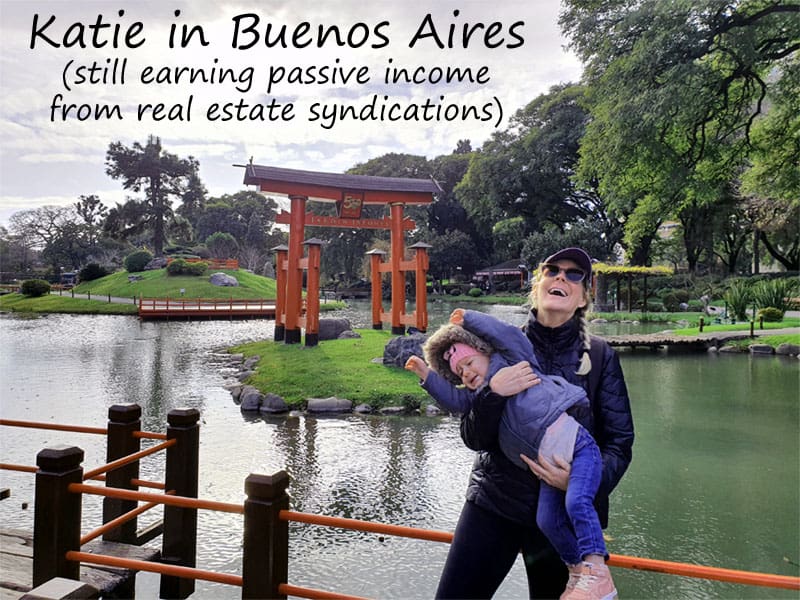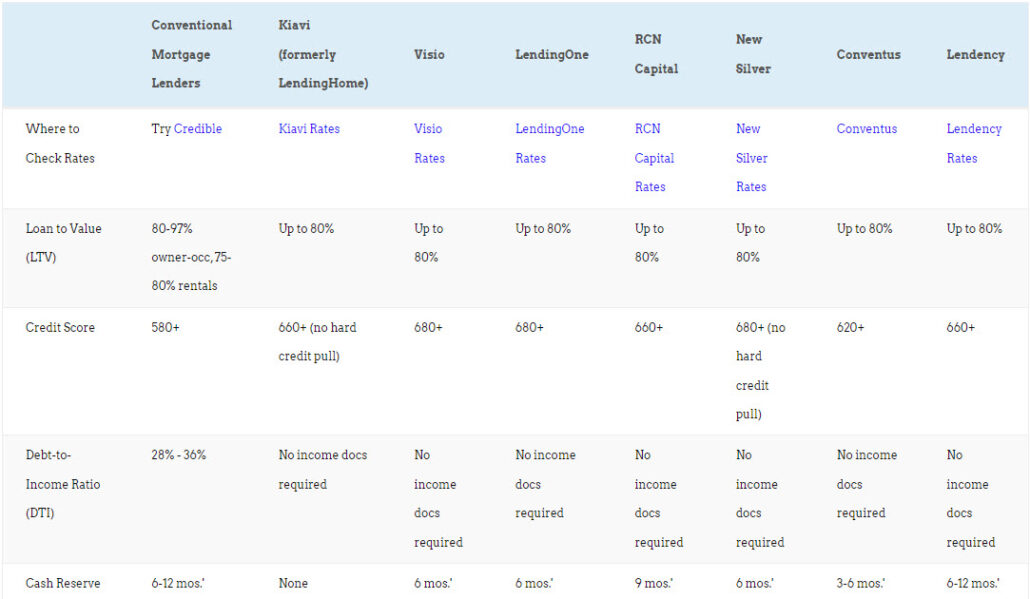
Rare is the departing tenant who leaves their unit in truly pristine condition. More often, the situation falls somewhere between “Fine” and “What happened?” — with the occasional “What the…?” thrown in for good measure.
Even when the space is spic and span, it needs to be cleaned and refreshed for the next tenant. Which raises two questions: Do you have to pay for that out of your own pocket? And if not, how much can you charge the departing tenant?
The answer to the first is a slightly longer version of “It depends,” and we’ll touch on what that means in a moment. The answer to the second is more nuanced, so that’s what we’ll really focus on here.
How Much Can a Landlord Charge for Cleaning?
The typical cleaning fee for an apartment or single-family rental unit ranges between $150 and $600. This works out to an hourly rate between $50 and $100.
These ranges assume the unit needs a deep cleaning but isn’t totally trashed.
The total fee depends on factors including but not limited to:
-
- How long the tenant was in place
- Total unit size (square footage)
- Room count
- Flooring type(s)
- Plumbing condition (how dirty the fixtures are and how well the drains operate)
- Whether it’s furnished or not
- The number and type of kitchen appliances that need to be cleaned
- Whether any outdoor cleaning is needed
Generally, older single-family homes with long-term tenants take longer to clean, and may require more cleaning effort, than newer apartment units. But of course, larger units of any type take longer to clean than smaller units in comparable condition.
If you’re charging the tenant for cleaning after the fact and deducting the fee from the security deposit, specify an hourly rate. You’ll need to itemize any charges deducted from the security deposit anyway.
What’s a Reasonable Hourly Rental Cleaning Charge?
If there’s no legal limit on how much you can ask your tenant to pay, how do you know how much to charge for cleaning a rental unit at move-out? Put another way, how do you know how to set apartment cleaning rates so that you don’t lose money or get yourself sued?
Easy. You do your research and apply a dash of common sense.
First, research. Find out what professional cleaning companies charge for residential service in your area.
More put-together cleaning businesses probably post this information on their websites or social media accounts. You might have to call or text local mom-and-pop house cleaners and pose as a prospective customer to get their regular cleaning rates.
Gather quotes from a mix of both to find a reasonably accurate local average. Many cleaning companies quote by room count or square footage rather than hours worked, so be prepared to convert those non-hourly rates when setting your own hourly cleaning rate.
Our research finds that “reasonable” hourly rental property cleaning rates range from $50 to $100. The range in your area is probably narrower. Once you find it, set your actual rate based on your own expected costs and how the cleaning charge fits into your revenue model and property marketing strategy. If you build your brand around value to the renter, set your cleaning fee at or near the bottom of your local range.
Can You Always Charge for Cleaning?
No, you can’t always charge to clean a rental unit.
Rental property laws vary by state, but you generally can’t charge tenants after the fact for ordinary cleaning at move-out. If the unit is in fine condition other than the normal wear and tear you’d expect following a long-term lease, expect to eat the cost of professional cleaning (or DIY cleaning, for that matter).
Can You Charge a Non-Refundable Cleaning Fee?
Yes, you generally can charge a tenant for move-out cleaning if you collect the fee upfront. Which means the “eat your cleaning costs” rule has a loophole big enough to drive a floor buffer through.
You must clearly indicate that this is a separate cleaning fee, not part of the security deposit, pet fee, or any other leasing fee. You may need to charge this fee in place of an hourly rate deducted from the tenant’s security deposit at move-out, so make sure it’s high enough to cover your expected costs.
Don’t go too high though. This fee must be reasonable. Set it at your expected cleaning expense for the unit size and type based on prior experience: $200 for four hours at $50 per hour, $225 for three hours at $75 per hour, and so on.
Can You Deduct Cleaning Fees From the Security Deposit?
It depends on the unit’s condition at move-out.
While you can’t dock a tidy tenant’s security deposit for ordinary cleaning at turnover, you may be allowed to deduct cleaning expenses when the condition exceeds the “normal wear and tear” threshold. State and local law ultimately dictate whether you can do this and any limits on how much you can take.
Check out this cheat sheet to differentiate between “normal wear and tear” and “damage.”
What Counts As Excessive Filth?
If everyone agreed on an objective standard of cleanliness, there’d be less drama around tenant cleaning fees. Cleaning-related conflicts tend to arise when tenants think they’ve been tidy and landlords disagree. You’ll save yourself a lot of grief and needless expense as a landlord by setting and communicating basic cleanliness expectations for your tenants.| Normal Cleaning Required | Excessive Cleaning Required |
| Water stains on plumbing and bath fixtures | Corrosion or excessive mineral buildup on plumbing and bath fixtures |
| Slow drains | Stopped or backed-up drains |
| Light scuff marks behind doors | Hard-to-remove scuffs or dents behind doors |
| Dusty or dirty window blinds | Window blinds dirtied or damaged beyond repair |
| Superficial dirt and scuffing on hard floors | Deep dirt/grime or scratches on hard floors |
| Light, scattered carpet stains | Heavy carpet staining and/or moisture damage |
| Washable scuffs and marks on mirrors | Scratches and/or hard-to-remove mirror stains (e.g. from oil-based makeup) |
| Some wood polishing required on cabinets and floors | Wood refinishing required |
| Polishing sinks and other plumbing fixtures required | Noticeable damage (dents, chips) to sinks and other plumbing fixtures |
| Some pet hair in corners and duct covers | Excessive pet residue or damage |
| Some cooking residue in kitchen appliances | Excessive cooking residue or damage |
| Light dusting required throughout the unit | Deep dusting (and scrubbing) required |
| Washable stains on refrigerator shelves | Excessive food residue or odor in the refrigerator |
| No evidence of indoor smoking | Evidence of indoor smoking (if a nonsmoking unit) |
| Few/no items left in storage areas | Junk left in storage areas |
| Tidy trash bins/outdoor trash area | Filthy bins/trash area |
Can You Charge Separate Cleaning Fees for Certain Areas or Fixtures?
This also depends on state and local law. But in general, you can charge reasonable fees to clean specific areas, items, or conditions in the unit or on the property. Common examples include pet cleaning fees, carpet cleaning fees, pool cleaning fees, gutter cleaning fees, and duct/vent cleaning fees. You’ll want to detail and collect these fees upfront. As with your general cleaning fee, do your research to determine which fees landlords typically charge in the area, and how much they charge for each. Be cautious about tacking on itemized fees if most nearby property owners don’t. Better to increase your general cleaning fee than to invite the impression that you nickel-and-dime your tenants, which could erode your occupancy rate over time.Can You Evict Tenants for Being Unclean?
Yes, but only when the unit’s condition can reasonably be described as “unsafe” or “unhealthy.” A unit in such condition presents an immediate hazard to the health and/or safety of its residents and visitors, and to residents and visitors of adjacent units or properties as well. The most common examples include:-
- Mold growth in high-moisture areas, such as bathrooms and basements
- Persistent standing water in basements or crawlspaces, which can cause structural issues over time
- Human or pet waste in living spaces or common areas
- Evidence of open fires inside the unit
Should You Charge for Cleaning as a Landlord?
Many novice landlords assume the answer to this question is an automatic “yes.” Why wouldn’t you pass cleaning costs onto the tenant responsible for dirtying the unit? For starters, state tenant protection laws generally prohibit charging tenants after the fact for cleaning a well-kept unit. If the renter leaves the unit relatively clean, it’s hard to justify charging them anything for cleanup fees. Besides, cleaning fees aren’t customary in all markets, and you don’t want to develop a reputation for fleecing your tenants.Questions to Ask Before Charging for Cleaning
Other considerations apply as well. Before charging for cleaning, ask yourself:-
- Does your standard lease have a cleaning clause or addendum? If not, be careful about charging for cleaning at move-out unless the place is in really bad shape. And consider adding legally binding cleaning expectations to future leases.
- Did you document the unit’s condition at move-in? This is another must-have if you want to charge for cleaning when the unit isn’t totally trashed. Grab a comprehensive walkthrough checklist and tour the place with the new tenant on or just before move-in day. Note obvious damage and cleanliness issues, taking photos as needed.
- Have you laid eyes on the place during tenancy? Some states allow landlords or property managers to inspect occupied rental units on a preset schedule, often every six or twelve months. Others are more strict about when and for what purposes inspections may occur. If you’re able to verify the unit’s condition, you’ll be in a stronger position to ask the tenant to address cleanliness issues before move-out.
- Did the tenant violate any cleanliness-related lease terms? If the tenant had a pet or smoked inside without permission, that’s an open invitation to charge them for cleaning. So are violations of more specific mandates, like “take care of backsplashes” or “clean the trash bins before moving out.”
- How long did the tenant stay? The longer the same tenant is in place, the more lived-in it’ll look. Put another way, the “normal wear and tear” threshold increases with time. It resets only when the unit turns over or you make specific repairs. Ironically, this means the bar for charging long-term tenants for cleaning is higher than for tenants who leave after a year. Of course, long-term tenants have many other benefits — not least that they pay more rent while in place.
- Do any cleanliness issues clearly exceed the “normal wear and tear” threshold? Refer to the table above for guidance. A moldering fridge, return vents smothered in pet hair, visible cooking grease on the kitchen ceiling — these aren’t tough calls.
How to Minimize Your Out-of-Pocket Rental Property Cleaning Costs
Whether you charge the tenant for it directly or not, you have to clean every rental unit you own at turnover.
This is an unavoidable outlay, but fortunately one you can control. Follow these guidelines to minimize your out-of-pocket rental property cleaning expenses.
1. Charge Upfront Cleaning Fee(s)
If state law permits, charge an upfront flat rate that covers your overhead costs for apartment or house cleaning at turnover.
You don’t have to match professional cleaning services’ rates or mirror all their add-on services, but your rate should reflect the extra time needed to clean seriously dingy spaces. For example, if you know the average cost to deep clean a particular unit is $300, set that unit’s cleaning fee at $300 — not $150.
If you own a single-family rental, consider charging itemized fees for specific areas of the property that need extra attention. Landlords can and do tack on fees for additional services like carpet cleaning, garage cleaning, pool cleaning, and gutter cleaning.
But again, don’t lose sight of local market expectations. If you’re the only landlord in your area itemizing upfront cleaning fees, you may have a hard time renting the property.
2. Detail Tenants’ Property Care Obligations in the Rental Agreement Itself
Any rental agreement should make clear that the tenant is responsible for returning the property in its original condition, less ordinary wear and tear.
Yours should go farther and detail tenants’ specific property care obligations, like mowing the lawn, clearing the sidewalk in winter, and changing the air filters. In many cases, these obligations relate to the tenants’ fundamental obligation to prevent health and safety hazards on the property. Some, like changing the air filters regularly, are more directly pro-cleanliness.
3. Detail Tenants’ Cleaning Obligations in a Cleaning Addendum
Your rental agreement should also detail tenants’ cleaning obligations prior to move-out.
The most efficient way to do this is to attach a cleaning clause or cleaning addenda to the lease. It should list every major appliance (fridge, range, microwave) and feature (flooring, bathroom, duct covers) and the relevant cleaning obligations.
Detail is your friend here. Better to come off as unfriendly or anal at signing than invite a misunderstanding that lands you in front of a judge. If you want the tenant to steam the carpet before they leave, write that down.
Unless it’s a really high-end unit, be judicious about asking the tenant to pay out of pocket for specialty cleaning services like pool, gutter, and window cleaning. It’s more reasonable to require them to hire professional maid service or house cleaning service in lieu of a cleaning fee.
4. Document Property Condition at Move-in
It’s in the tenant’s own interest to document the property’s condition at move-in. If you or an employee you trust can accompany them on the walk-through, even better.
The idea here is to create a comprehensive accounting of existing issues that might normally incur repair costs or necessitate deep cleaning services at move-out. Note issues in writing with accompanying timestamped photos. Save the finished document as a signed addendum to the lease agreement to reference as needed during the tenancy.
5. Keep Tabs on Tenants’ Cleanliness
Within the bounds of applicable law, of course. You can’t show up unannounced or ask to inspect the property at random times simply to verify its cleanliness.
However, you may be allowed to make scheduled cleaning inspections, perhaps as often as twice per year. You can also get intel from your maintenance crew and third-party service providers, like plumbers and electricians.
If it’s convenient, you can even drive by the place yourself (or delegate this job to someone closer). A drive-by is no substitute for a methodical interior walk-through, but it’s useful enough. If you see the yard is a mess or there’s stuff piling up on the front porch or driveway, can surmise the inside is worse for the wear too.
6. Work Out a Volume Deal With a Professional Cleaning Company You Trust
The house cleaning pricing guides that cleaning businesses show to consumers mean nothing for commercial clients. Promise a reliable flow of business and you can beat those average prices by a mile.
This is especially important given the alternatives. While state or local law probably doesn’t require you to hire a professional cleaning team, it’s good for your reputation as a landlord.
Maybe more importantly for landlords focused on the bottom line: It’s cheaper to go this route. The typical commercial cleaning company (or individual cleaner, for that matter) has lower labor costs than the typical property management crew. Rather than ask them to roll up their sleeves and scrub toilets, save them for heavier repair and restoration jobs that make better use of their skills. If you do use them for cleaning, focus them on deeper cleaning tasks like heavy bathroom cleaning and deep cleaning floors, or more specialized tasks like appliance cleaning and duct cleaning.
7. Itemize Cleaning Charges Deducted From the Security Deposit
If you do end up deducting cleaning charges from the tenant’s security deposit, you should first familiarize yourself with local security deposit law. You need to know:
-
- The maximum you can deduct for cleaning expenses, if allowed
- The deadline for accounting for all deductions
- The deadline for returning the remainder to the departing tenant
Then provide an itemized statement showing the charge for each type of cleaning or area cleaned. The more detail you can provide, the less likely the tenant will be to make a fuss, assuming the cleaning charges are reasonable in the first place.
Final Thoughts
You’re a landlord, not a residential cleaning business. But your cleaning fees should mirror residential cleaning prices in your area.
That means you’ll need to do some research. Learn the average condo cleaning prices, apartment cleaning costs, and single-family house cleaning rates. Set a square footage rate that reflects the range of services (and additional add-on options) your cleaning crew offers. Adjust it for variables like extra bathrooms. And build in a buffer that covers not only the average cleaning time but really detailed cleaning jobs as well.♦
How do you handle cleaning fees as a landlord? At what point do you charge for tenant cleaning fees, rather than swallowing them as a turnover cost of doing business?
























In these cases I usually get a professional quote, and then decide if I feel like cleaning the property myself for a slightly discounted amount, such as 10% lower than the professional quote. If not, I just hire the professional cleaners.
A great strategy Brandon!
The problem arises when their security deposit doesn’t cover the damage and dirtiness. In my experience, it’s usually not worth taking ex-tenants to small claims court over these excess costs, because it’s so hard to collect from them.
Sad but true Bruce!
To manage cleaning fees as a landlord effectively, you need to follow the law, talk openly with tenants, document property conditions, and match fees with local norms. Striking a balance between covering cleaning expenses and keeping a good landlord-tenant relationship is key.
Very true Britney!
In contrast, when tenants dispute cleaning fees, what are the necessary steps I should take to resolve these disputes?
Prepare all your documentation, such as photos of the dirtiness and you cleaning it up, along with your documented hours of cleaning. If the renter takes you to court, you’ll have your ducks in a row to show evidence to the judge.
I charge 1.5 months’ security deposit. It’s not perfect protection, but it’s better than just 1 month’s rent, and leaves more room for charging the tenant if they leave the property dirty.
It’s a great practice in markets where you’ll still get plenty of rental applications!